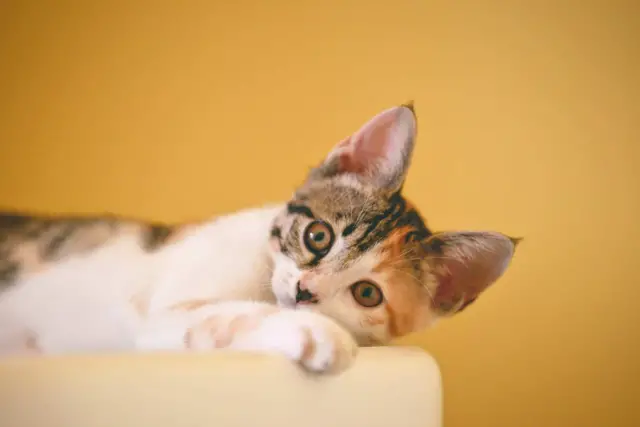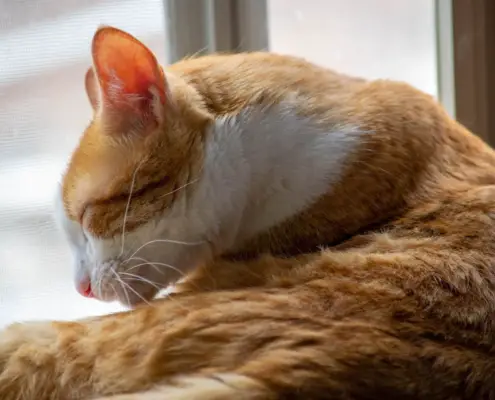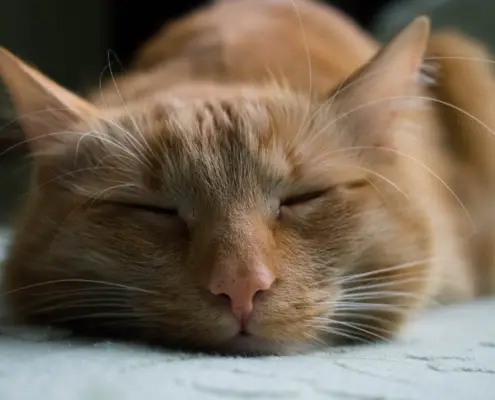
Introducing new food to your cat may seem like a simple task, but it’s actually a process that requires careful consideration. Cats are creatures of habit, and sudden changes in their diet can lead to digestive issues and other health problems. That’s why it’s crucial to introduce new food to your cat slowly, allowing their system to adjust and ensuring a smooth transition.
One of the main reasons why it’s important to introduce new food gradually is to prevent digestive upset. Cats have sensitive stomachs, and abrupt changes in their diet can lead to vomiting, diarrhea, and other gastrointestinal problems. By slowly introducing the new food, you give your cat’s digestive system time to adapt and minimize the risk of these issues.
Another reason for a gradual transition is to prevent food aversion. Cats can be finicky eaters, and sudden changes in their diet can lead to them rejecting the new food altogether. By introducing the new food slowly, you allow your cat to get used to the taste and texture, increasing the chances of them accepting it and enjoying their meals.
Signs that it’s time to switch your cat’s food
There are several signs that indicate it may be time to switch your cat’s food. Paying attention to these signs can help you make an informed decision and ensure that your cat’s dietary needs are being met.
One common sign that it’s time to switch your cat’s food is a lack of interest in their current food. If your cat suddenly starts refusing to eat or shows disinterest in their meals, it could be a sign that they’re getting bored or unsatisfied with their current diet. Introducing new food can help reignite their appetite and make mealtime more enjoyable for them.
Another sign to look out for is digestive issues. If your cat is experiencing frequent bouts of vomiting or diarrhea, it could be a sign that their current food doesn’t agree with them. Switching to a different formula or brand can help alleviate these symptoms and improve their overall digestive health.
Additionally, if your cat has specific dietary needs, such as allergies or sensitivities, it may be necessary to switch their food to accommodate those needs. Consulting with your veterinarian can help you determine if a dietary change is necessary and what type of food would be most suitable for your cat’s specific needs.
Understanding your cat’s dietary needs
Before introducing new food to your cat, it’s essential to understand their dietary needs. Cats are obligate carnivores, which means they require a diet rich in animal protein. Their bodies are designed to derive essential nutrients from animal-based sources, making it crucial to choose a high-quality cat food that meets these requirements.
When selecting cat food, look for products that list a high-quality source of animal protein, such as chicken, turkey, or fish, as the first ingredient. Avoid foods that contain excessive amounts of fillers, by-products, or artificial additives, as these can be detrimental to your cat’s health.
It’s also important to consider your cat’s age and any specific health conditions they may have. Kittens, adult cats, and senior cats have different nutritional needs, and it’s essential to choose a food that is appropriate for their life stage. If your cat has any health issues, such as kidney disease or diabetes, consult with your veterinarian to determine if any dietary modifications are necessary.
How to choose the right new food for your cat
Choosing the right new food for your cat can be overwhelming with the multitude of options available. However, by considering a few key factors, you can make an informed decision and select a food that meets your cat’s needs.
Firstly, consider your cat’s preferences and dietary requirements. Some cats may have specific food sensitivities or allergies that need to be taken into account. If your cat has any known allergies, opt for a hypoallergenic or limited ingredient diet that avoids common allergens.
Next, read the labels carefully and look for high-quality ingredients. Check for a named animal protein as the first ingredient, as well as a balanced blend of other essential nutrients. Avoid foods that contain excessive amounts of grains or fillers, as these offer little nutritional value for your cat.
It’s also beneficial to choose a cat food that is specifically formulated for your cat’s life stage. Kittens have different nutritional needs than adult or senior cats, and selecting a food that is appropriate for their age will ensure they receive the right balance of nutrients.
Lastly, consider your budget. While it’s important to prioritize your cat’s health, it’s also important to choose a food that fits within your financial capabilities. Look for high-quality options that offer good value for money and consider purchasing in bulk to save on costs.
Preparing your cat for the transition
Before starting the transition to the new food, it’s important to prepare your cat for the change. This can help minimize stress and ensure a smoother transition process.
Start by gradually introducing small changes to your cat’s routine. For example, you can begin by placing the new food next to their current food bowl or mixing a small amount of the new food with their current food. This allows your cat to become familiar with the smell and taste of the new food without overwhelming their system.
It’s also a good idea to consult with your veterinarian before making any dietary changes. They can provide guidance specific to your cat’s needs and recommend any additional supplements or adjustments that may be necessary.
Lastly, ensure that your cat has a comfortable and stress-free environment during the transition. Cats are sensitive to changes in their surroundings, and providing a calm and stable environment can help ease the transition process.
Introducing the new food gradually
When introducing the new food, it’s important to do so gradually to allow your cat’s digestive system to adjust. Follow these steps to ensure a smooth transition:
- Start by mixing a small amount of the new food with your cat’s current food. Gradually increase the proportion of the new food over a period of 7-10 days.
- Monitor your cat’s response to the new food during the transition period. Watch for any signs of digestive upset or food aversion.
- If your cat experiences any digestive issues, slow down the transition process and continue with the current food until their system stabilizes. Then, resume the transition at a slower pace.
- Pay attention to your cat’s appetite and behavior. If they’re consistently eating the new food without any issues, you can gradually eliminate the old food from their diet.
Remember, each cat is unique, and the transition process may vary. Be patient and adapt the pace of the transition based on your cat’s individual needs.
Monitoring your cat’s response to the new food
Throughout the transition period, it’s important to closely monitor your cat’s response to the new food. This will help you identify any issues early on and make any necessary adjustments.
Keep an eye on your cat’s appetite and overall behavior. If they’re consistently eating the new food and showing no signs of digestive upset, it’s a positive indication that the transition is going well. However, if your cat refuses to eat or experiences any vomiting, diarrhea, or other digestive issues, it may be a sign that the transition is too fast or that the new food doesn’t agree with them.
If you notice any adverse reactions, slow down the transition process and give your cat more time to adjust. You can also consult with your veterinarian for further guidance and support. They may recommend additional interventions, such as digestive supplements or a different type of food, to help ease the transition.
Troubleshooting common issues during the transition
During the transition period, it’s not uncommon to encounter some challenges or issues. Here are some common problems that may arise and how to troubleshoot them:
- Food aversion: If your cat is refusing to eat the new food, try mixing in a small amount of a highly palatable treat or wet food to entice them. Gradually reduce the amount of the additional food over time until your cat is comfortable eating the new food on its own.
- Digestive upset: If your cat is experiencing vomiting or diarrhea, it may be a sign that the transition is too fast or that the new food doesn’t agree with them. Slow down the transition process and consult with your veterinarian if the symptoms persist.
- Lack of appetite: Some cats may experience a temporary decrease in appetite during the transition. Ensure that your cat has a quiet and stress-free environment during mealtime and try feeding smaller, more frequent meals to entice their appetite.
- Weight loss or gain: If your cat is losing or gaining weight during the transition, it may be necessary to adjust the portion sizes of the new food. Consult with your veterinarian for guidance on appropriate feeding amounts for your cat’s specific needs.
Remember, patience and consistency are key during the transition period. With time and proper adjustments, most cats will adapt to the new food and thrive on their new diet.
Tips for a successful food transition
To ensure a successful food transition for your cat, consider the following tips:
- Consult with your veterinarian: Before making any dietary changes, consult with your veterinarian to ensure that the new food is appropriate for your cat’s specific needs.
- Take it slow: Gradually introduce the new food over a period of 7-10 days to allow your cat’s digestive system to adjust.
- Monitor your cat’s response: Keep a close eye on your cat’s appetite, behavior, and overall well-being during the transition. Watch for any signs of digestive upset or food aversion.
- Seek professional guidance: If you encounter any difficulties or concerns during the transition, don’t hesitate to reach out to your veterinarian for guidance and support.
- Be patient: Each cat is unique, and the transition process may take longer for some cats than others. Be patient and allow your cat the time they need to adjust to the new food.
By following these tips and being attentive to your cat’s needs, you can ensure a successful and smooth transition to their new food.
Conclusion
Introducing new food to your cat can be a daunting task, but with the right approach and careful consideration, you can ensure a smooth transition. By understanding the importance of a gradual change, recognizing signs that it’s time to switch your cat’s food, and selecting the right new food for their dietary needs, you set the stage for a successful transition. Preparing your cat for the change, introducing the new food gradually, and monitoring their response throughout the process will help minimize stress and digestive issues. By troubleshooting common issues and following the provided tips, you can confidently introduce your cat to new food and provide them with a healthy and balanced diet.
Remember, if you have any concerns or questions about your cat’s dietary needs or the transition process, it’s always best to consult with your veterinarian for personalized guidance and support.
If you enjoyed my article, I would appreciate you sharing it with your network.

Sima Ndlebe
Sima writes for CatBuzz. He is interested in Cats, Health and Fitness, and Entrepreneurship.
Published: 31 October 2023
Related Articles
Disclaimer
The content found on CatBuzz.org is presented on an "as is" basis and is intended for general consumer information and education purposes only. Any utilization of this information is voluntary and solely at the user's own risk.
None of the articles or content should be regarded as, or used in place of, veterinary medical advice, diagnosis, or treatment. The information provided on the website is purely for educational and informational intentions and should not be considered a substitute for professional guidance from a veterinarian or other qualified expert. The articles are designed to inform consumers about veterinary healthcare and medical matters that may impact their cat's daily life. It should be noted that this website and its services do not constitute the practice of any form of veterinary medical advice, diagnosis, or treatment. CatBuzz.org explicitly disclaims any liability for any direct or indirect damages or losses that may arise from the use of or reliance on the information contained within the content.
Consumers must consult a veterinarian, veterinary specialist, or another qualified veterinary healthcare provider when seeking advice regarding their cat's health or medical conditions. It is important not to ignore, avoid, or postpone seeking medical advice from a veterinarian or other qualified veterinary healthcare provider solely based on information obtained from this website. If you believe that your cat may be experiencing a medical issue or condition, it is imperative to promptly contact a qualified veterinary healthcare professional.



